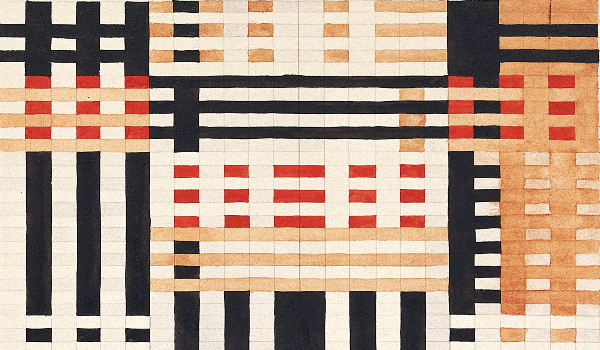
Fruit Of The Loom

Walking into the Tate Modern this month is going to prove something of a shock for fine art lovers. The new exhibition on Anni Albers celebrates not painting or sculpture, but textiles. The Tate has shown textiles before, notably with Sonia Delaunay: but says the co-curator of the Albers’ show, Ann Coxon, ‘We are not starting with a painting, moving on to abstraction followed by some textile; we start with one of Albers’ looms and a film by architect and filmmaker Simon Barker of his wife, the weaver Ismini Samanidou, weaving on one of Anni’s looms.’
Proceeding through the exhibition, visitors will be able to examine samples of Albers’ weaving at close quarters, including a thicket of suspended rolls of Albers’ cloth. ‘The whole show is about a woman who is a weaver and how weaving can be a valid modernist art practice. Anni Albers’ work is not “decorative”, it’s quite conceptual – corroborating Roland Barthes’ comment that the loom is ‘a maquette of reasoning’.

Anni Albers got into weaving by chance. Born in Berlin in 1899, she applied twice to the Bauhaus, originally hoping to study painting and drawing. However, at the time women students were ‘encouraged’ to take up weaving in what became known as the ‘women’s’ workshop, which Albers did in 1922. ‘She quickly fell in love with the method, the process and the mechanism that is weaving and devoted the rest of her life to exploring exactly that,’ says Coxon.
In the show, visitors will see Albers’ work in close focus, experiencing her belief that textile is inherently many-sided. Works will be displayed to show front and back, hanging freely in space and laid flat and on a wall. There is even a space where visitors will be encouraged to touch textiles.

Anni Albers is a joint exhibition by the Tate and the Kunstsammlung Nordrhein-Westfalen, neither of whom own any important works by Anni Albers because it is ‘craft,’ so they have drawn heavily on loans from the Josef and Anni Albers Foundation. This show shifts that culture, hopefully permanently.
Extract from the Surface issue. Words by Corinne Julius.
Open now, until 27 January 2019.
